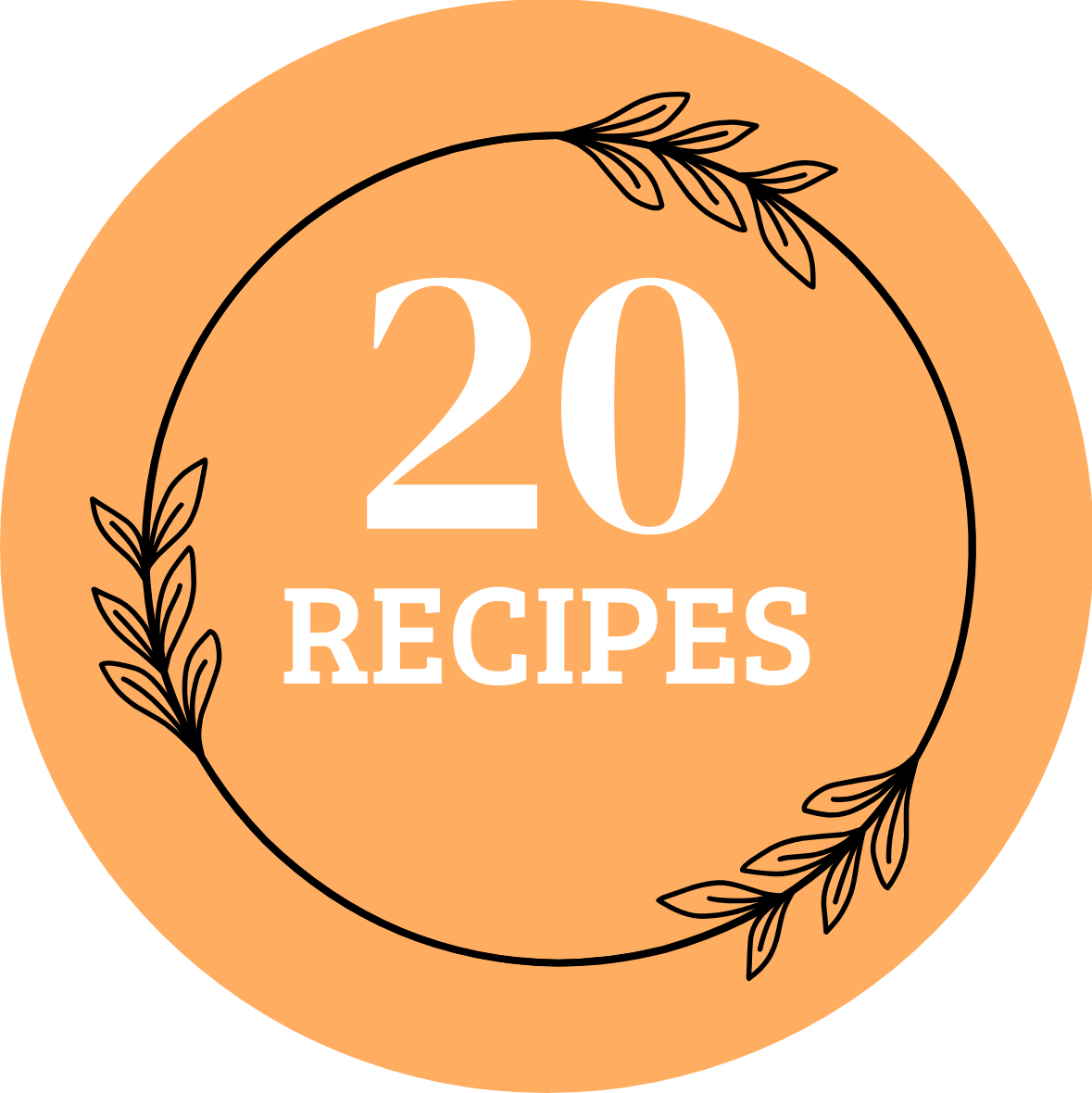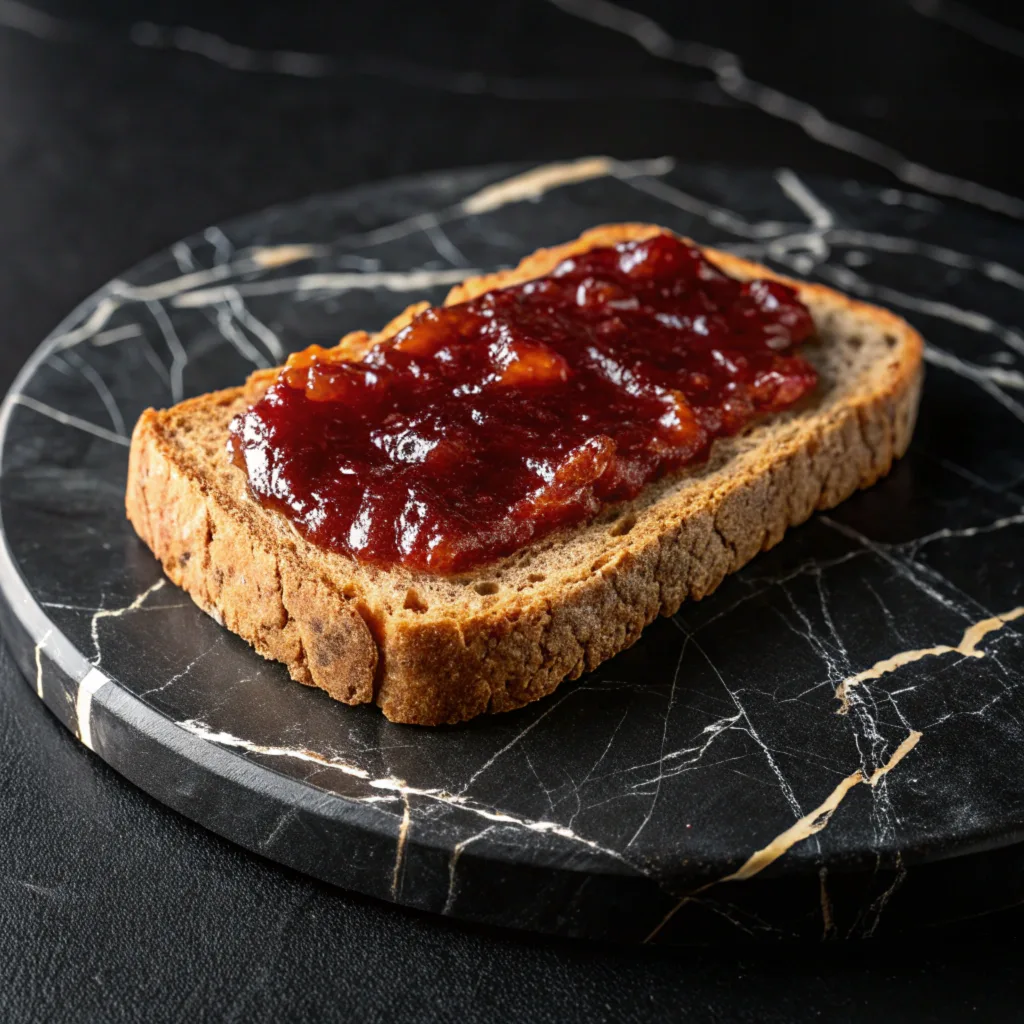Breaking Down Toast and Jam
The Bread Factor
The nutritional value of toast largely depends on the type of bread you choose. Different breads provide varying amounts of fiber, vitamins, and minerals, which affect blood sugar levels, digestion, and heart health. Here’s a closer look at some popular options:
- Whole Grain Bread – Known for being high in fiber and B vitamins, whole grain bread supports heart health and improves digestion. It’s also a low-glycemic option, helping to stabilize blood sugar levels. The fiber content keeps you full longer, making it a great choice for weight management.
- White Bread – Often made from refined grains, white bread is low in fiber and lacks essential nutrients. It also has a high glycemic index, which can cause rapid blood sugar spikes followed by energy crashes. While it may be soft and tasty, it’s not the healthiest option for regular consumption.
- Multigrain Bread – This bread often combines different grains, but not all varieties are nutritious. Some are still made with refined grains rather than whole grains. Look for labels that specify “100% whole grain” or “sprouted grains” to ensure you’re getting maximum nutrients.
- Sourdough Bread – Thanks to its fermentation process, sourdough bread is easier to digest and has a lower glycemic index compared to white bread. It also contains probiotics that support gut health. Its tangy flavor pairs well with both sweet and savory toppings.
- Gluten-Free Bread – A great option for those with celiac disease or gluten sensitivity. However, some gluten-free breads may lack fiber and protein. Choose varieties enriched with seeds and whole grains for added nutrition.
For more information about whole grains and their benefits, you can explore this resource from the Harvard T.H. Chan School of Public Health that provides in-depth insights into nutrition and health.
The Jam Factor
The nutritional profile of jam can vary significantly depending on its ingredients. While some jams are loaded with sugar and preservatives, healthier alternatives focus on natural ingredients and reduced sugar. Here’s how different types of jam compare:
- Fruit Preserves – Made with real fruit chunks and natural fruit sugars, fruit preserves often retain antioxidants and vitamins from the fruit. While they offer a more natural option, they can still be high in sugar. Opt for versions labeled “no added sugar” or “low sugar” for a healthier choice.
- Sugar-Free Jams – Designed for low-carb and low-sugar diets, these jams are sweetened with natural alternatives like stevia or monk fruit. They provide the sweetness of fruit without spiking blood sugar. Sugar-free jams are ideal for diabetics and those looking to reduce calorie intake.
- Homemade Jams – Often the healthiest option, homemade jams can be made using chia seeds, fresh fruit, and natural sweeteners like honey or maple syrup. These jams are rich in fiber, omega-3 fatty acids, and vitamins, making them a nutritious alternative to store-bought varieties.
- Chia Seed Jams – A rising trend in healthy spreads, chia seed jams offer a boost of fiber and healthy fats. They’re quick to make and don’t require refined sugar.
- Reduced Sugar Jams – These jams strike a balance between taste and nutrition. They provide the flavor of traditional jams but with fewer calories and less sugar.
Pro Tip: Pair low-sugar jams with nut butter for added protein and healthy fats. Alternatively, combine jam with Greek yogurt for a high-protein snack.
Healthy Spread Ideas:
- Use almond butter with sugar-free jam for protein-rich energy.
- Top toast with avocado and chia seed jam for a fiber boost.
- Layer Greek yogurt, berries, and homemade jam for a balanced breakfast parfait.
Nutritional Breakdown
Understanding the nutritional content of toast and jam is essential for determining whether it can be part of a balanced diet. While this combination provides quick energy, its overall health impact depends on the bread type, jam ingredients, and portion size.
Calories and Macronutrients
A slice of toast with jam typically provides:
- 150–250 calories – The calorie count depends on the type of bread (e.g., whole grain vs. white bread) and the amount of jam.
- Carbohydrates – Provide quick energy to fuel your morning routine. Whole grain bread offers complex carbs, which digest more slowly and help maintain steady energy levels.
- Fiber – Found especially in whole grains, fiber promotes digestion, supports gut health, and helps keep you fuller for longer.
- Protein – While toast and jam alone are low in protein, adding nut butters, seeds, or Greek yogurt can boost protein intake and improve satiety.
- Fats – Naturally low in fats, this pairing can be complemented with healthy fats like nut butters or avocado.
Sugar Levels
- Natural Sugars – Found in fruit-based jams, they provide quick energy but should be balanced with fiber and protein.
- Added Sugars – Common in processed jams, added sugars can contribute to weight gain and energy crashes. Opt for sugar-free or low-sugar alternatives to reduce calorie intake.
- Glycemic Impact – Foods high in refined sugar can cause blood sugar spikes. Choosing whole grain bread and low-sugar spreads can stabilize blood glucose levels.
Micronutrients
- Vitamin B Complex – Supports energy production and metabolism. Whole grain bread is often fortified with B vitamins, including B6 and B12, which are essential for brain function.
- Antioxidants – Present in fruit-based jams, antioxidants like vitamin C and polyphenols help combat inflammation and boost immunity.
- Iron and Magnesium – Found in whole grains, these minerals support muscle function and oxygen circulation.
- Potassium – Naturally present in fruit spreads, potassium helps regulate blood pressure and supports heart health.
Nutritional Considerations
- Portion Control – Stick to 1 slice of toast and 1–2 teaspoons of jam to avoid excess calories.
- Balanced Toppings – Add nut butter, Greek yogurt, or seeds to improve protein content and nutritional balance.
- Pair with Proteins – Combine toast and jam with a boiled egg or a smoothie for a complete breakfast.
This breakdown highlights how toast and jam can be a nutritious meal with the right ingredients. Adjust your choices based on health goals, such as weight management or blood sugar control.
Health Benefits of Toast and Jam
Toast and jam can be a nutritious option when prepared thoughtfully:
- Energy Boosting – Carbs in toast provide quick energy.
- Digestive Health – Whole grains support gut health.
- Antioxidant Benefits – Fruits in jam contain vitamins and antioxidants.
- Low Glycemic Options – Using sourdough bread or low-sugar jams can stabilize blood sugar. Pair this with a protein-rich dish like these Protein Cookies for a balanced meal.
Potential Health Risks
While toast and jam can be a quick and tasty breakfast option, it does come with some health concerns if not prepared thoughtfully.
Excess Sugar Intake
- Processed jams often contain refined sugars and high-fructose corn syrup, which can lead to weight gain, energy crashes, and an increased risk of type 2 diabetes when consumed regularly.
- White bread is low in fiber and high on the glycemic index, causing rapid blood sugar spikes followed by energy slumps. Over time, this can contribute to insulin resistance and metabolic issues.
Tip: Opt for sugar-free jams or fruit preserves with no added sugars and pair them with whole grain or sourdough bread to minimize glycemic impact.
Low Protein Content
- Toast and jam primarily provide carbohydrates but lack protein and healthy fats, which are essential for maintaining fullness and sustained energy levels.
- Without protein, this meal may lead to hunger cravings and snacking later in the day, potentially affecting calorie control.
Tip: Add nut butters, chia seeds, or a side of eggs to increase protein intake and make the meal more satisfying.
Healthier Alternatives for Toast and Jam
While toast and jam can be a delicious breakfast, making a few simple swaps can significantly improve its nutritional profile. Here are some healthier alternatives to consider:
Better Bread Choices
- Whole Grain Bread – Rich in fiber, B vitamins, and minerals, whole grain bread helps support digestion and heart health. It also provides slow-releasing energy to keep you fuller for longer. Look for varieties labeled “100% whole grain” or “sprouted grains” for maximum benefits.
- Sourdough Bread – Thanks to its fermentation process, sourdough bread is easier to digest and contains probiotics that promote gut health. It also has a lower glycemic index compared to white bread, making it ideal for blood sugar control.
- Gluten-Free Bread – Perfect for those with celiac disease or gluten intolerance. Modern options made with nut flours, quinoa, or seeds often provide fiber and healthy fats. Pair this with recipes like this Gluten-Free Lasagna for more gluten-friendly meal ideas.
Healthier Jam Options
- Sugar-Free Spreads – Made with natural sweeteners like stevia or monk fruit, these spreads are ideal for low-carb and diabetic-friendly diets. They offer the sweetness of fruit without spiking blood sugar levels.
- Nut Butters – Almond, peanut, and cashew butters are rich in healthy fats, protein, and vitamin E. They can add creaminess and flavor while improving satiety and energy balance.
- Chia Seed Jams – A popular homemade option, chia seed jams combine fresh fruit, chia seeds, and natural sweeteners for a fiber-rich and omega-3-packed spread. These jams are easy to make and perfect for those looking to reduce sugar intake.
- Fruit Compotes – Made by cooking fresh fruits with minimal sweeteners, fruit compotes offer a chunkier texture and retain more vitamins and minerals. They make a great topping for toast when paired with Greek yogurt or cottage cheese.
Smart Topping Combinations
To further enhance nutrition, pair your bread and spreads with protein-rich and nutrient-dense toppings:
- Avocado Slices – Packed with healthy fats and fiber.
- Cottage Cheese or Greek Yogurt – Adds protein and calcium.
- Fresh Berries – High in antioxidants and vitamin C.
- Seeds and Nuts – Sprinkle chia, flaxseeds, or crushed almonds for added fiber and omega-3s.
FAQs About Toast and Jam
1. Is toast and jam healthy?
Yes, when using whole grains and sugar-free spreads. Add protein for balance.
2. Can toast and jam cause weight gain?
Excess calories from refined bread and sugar-heavy jams may lead to weight gain. Stick to moderate portions.
3. Are sugar-free jams better?
Yes, sugar-free jams reduce sugar spikes and help with weight management.
4. Can toast and jam fit into a weight-loss diet?
Absolutely—pair it with protein-rich sides like these Protein Cookies to stay full longer.
Final Thoughts
Toast and jam can be a healthy breakfast option when prepared thoughtfully. By choosing whole grain bread, sugar-free jams, and adding protein-rich toppings, this staple can fit into any diet plan. If you’ve ever wondered, how healthy is toast and jam, the key lies in selecting nutrient-dense ingredients and balanced pairings to maximize its nutritional value.
Key Takeaways:
- Opt for whole grains to boost fiber and nutrients.
- Choose sugar-free spreads to reduce sugar intake and avoid blood sugar spikes.
- Pair with protein and healthy fats for a balanced and satisfying meal.
By making smarter choices, toast and jam can be nutritious, versatile, and suitable for most healthy eating plans.

